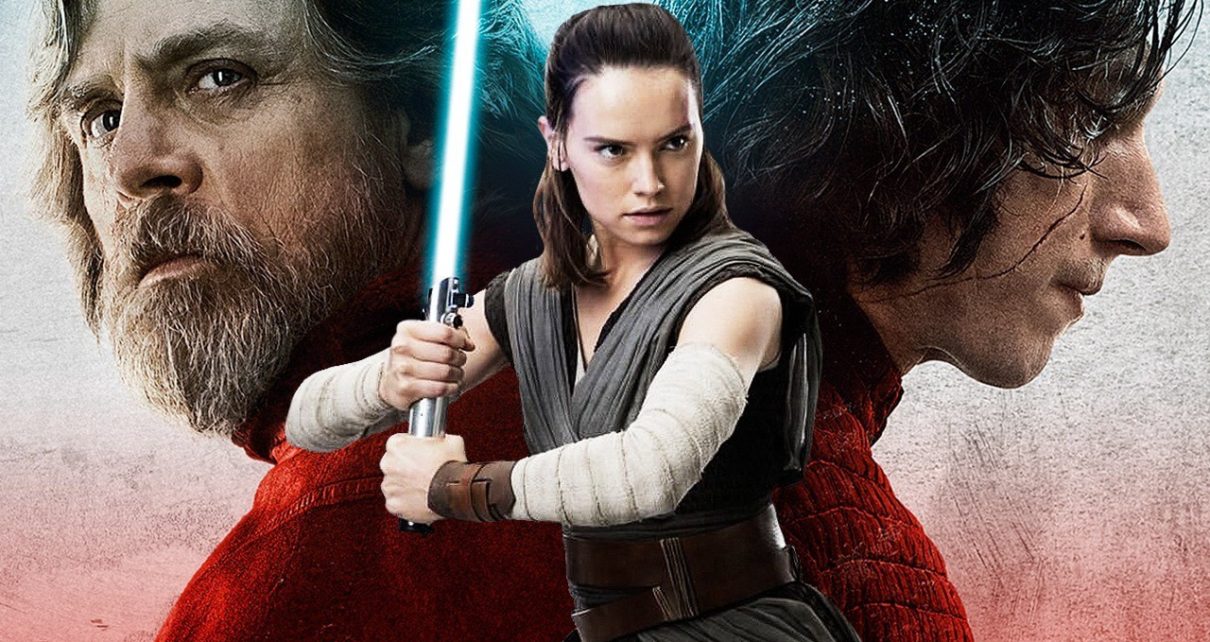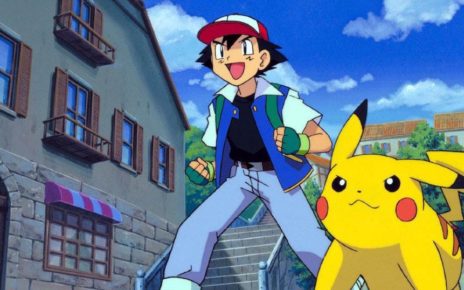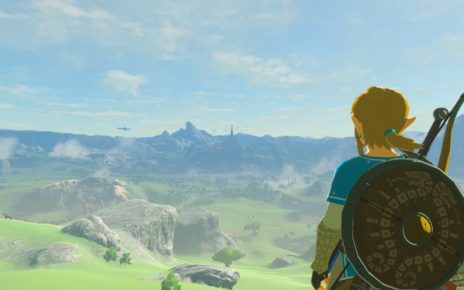I could hear it as soon as I walked out of the theater. Could you? The howling, the whooping, the hollering of total idiots making dumb arguments about the latest Disney-funded billion-dollar blockbusting monstrosity—Star Wars: The Last Jedi, directed by Rian Johnson. Here’s the thing, though: The Last Jedi, for all its odd little plot holes and quirks (fish nuns, a side quest in the middle of a slow chase scene, Game of Thrones–level time jumps), is a terrific movie. It’s probably the best Star Wars film since The Empire Strikes Back. I’m not here to debate it or to bait the haters. If you strongly disagree, feel free to hit the little “X” button at the top of the screen. I’m just here for the lovers looking to keep their high going and recommend a cool thing to watch based on that damn amazing movie filled with color and visual creativity and thematic resonance and a clear resistance to all the J.J. Abrams mystery box silliness of The Force Awakens.
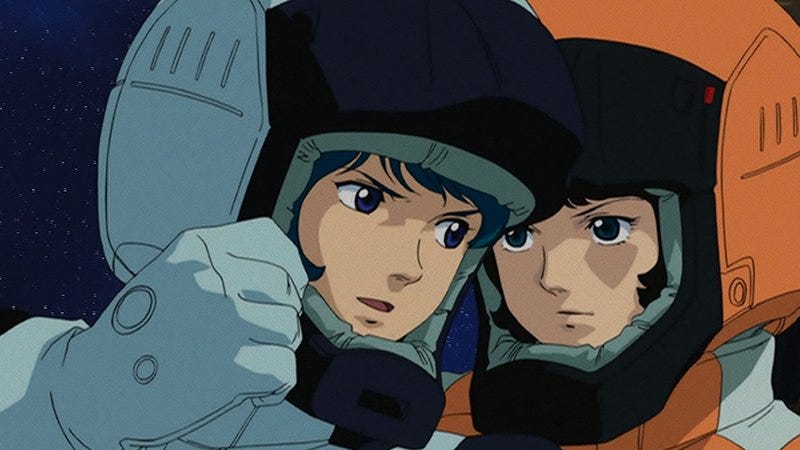
All haters gone now? Good. Down to business. If you’re looking for a visually spectacular anime that mines some of the same concepts as The Last Jedi to thematic effect and in a space opera setting, you need to watch this joint called Mobile Suit Zeta Gundam, screaming at light speed outta 1985. Here are a few of the reasons why.
Big spoilers for The Last Jedi and small spoilers for Zeta Gundam follow, btw. 😉
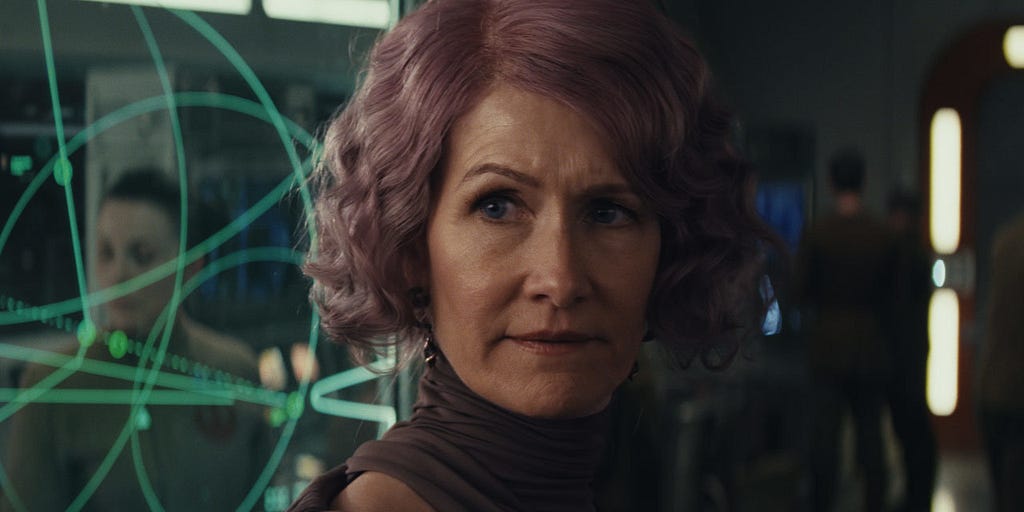
1. They’re both slow-burn space operas about impossible decisions and uncomfortable alliances
If you’ve seen The Last Jedi, you know it’s kinda like the anti-Mad Max: Fury Road of action movies. It’s a two-hour-plus film largely framed around an excruciatingly slow chase scene between First Order star destroyers and the last dregs of the Resistance fleet. It sets up a lose-lose trap in which the rebels are forced to make a series of difficult sacrifices with no clear hope of victory in any traditional sense, sometimes due to the decisions of their own commanding officers. It chips away at the main characters, despite their nerve: “I can’t take any more losses,” General Leia Organa tells Vice Admiral Holdo. “Sure you can,” Holdo replies. “You taught me how.”
Zeta Gundam—the direct sequel to the original Gundam series Mobile Suit Gundam—operates in a similar way. Throughout much of its 50-episode run, the lead characters are locked in often-nebulous conflicts that test their resolve for causes they’ve devoted their lives to. Characters who were mortal enemies defect and fight side-by-side. Splinter factions form and turn conflicts into three-way power struggles. A main character literally loses his mind.
The through lines of both The Last Jedi and Zeta Gundam are pretty clear: tiny decisions made in the heat of conflict by imperfect leaders have massive consequences. Depending on what you’re watching, it might mean punching your starship at light speed through the enemy fleet or it might mean dropping a whole space colony on Earth in an attempt at mass destruction.
2. They both have laser swords—and they don’t really matter
Did I mention Zeta Gundam is all about giant freakin’ robots with laser swords? I mean, that’s what the whole Gundam metaseries is based around: there are mobile suits (giant robots), often piloted by talented and emotionally damaged child soldiers like Kamille Bidan (our protagonist), who are mentored by devilishly cool and sunglass-wearing dudes like Quattro Bajeena (our deuteragonist). The coolest mobile suits on the show are invariably the Gundam models that are invariably piloted by the protagonist.
Of course, the space battles on all the Gundam shows are always great fun to watch, but their character conflicts are what make for great television. Take for example the case of Zeta Gundam deuteragonist Quattro Bajeena, a dashing ace pilot fighting on the side of the “good” guys in Zeta despite the fact that he fought against those very same good guys in the original series Mobile Suit Gundam. On that show he was known as Char Aznable, a not-always noble but always-cool badass who assumes a secret identity and wears a mask so that he can avenge the death of his parents. Char’s combat skills are impressive, but its his cool and decidedly grey characterization that make him compelling and cool. Like Han Solo in the original Star Wars trilogy, he’s often the guy quickest to call bullshit when he sees it—a role that falls to Luke Skywalker in The Last Jedi. The reason Luke chucks the lightsaber away is because he cares about the Force, not the Jedi and not fighting, ultimately. It’s a characterization that makes sense given his history. I won’t totally spoil one of Char’s coolest scenes ever in the entire sprawling Gundam metaseries, but I will say it doesn’t happen in a balletically choreographed space duel with his rival Amuro Ray, but when he gives a speech in Dakar in Zeta Gundam. As powerful as fighters and mentors like Luke and Char can be, the ideas that propel them matter a whole lot more.
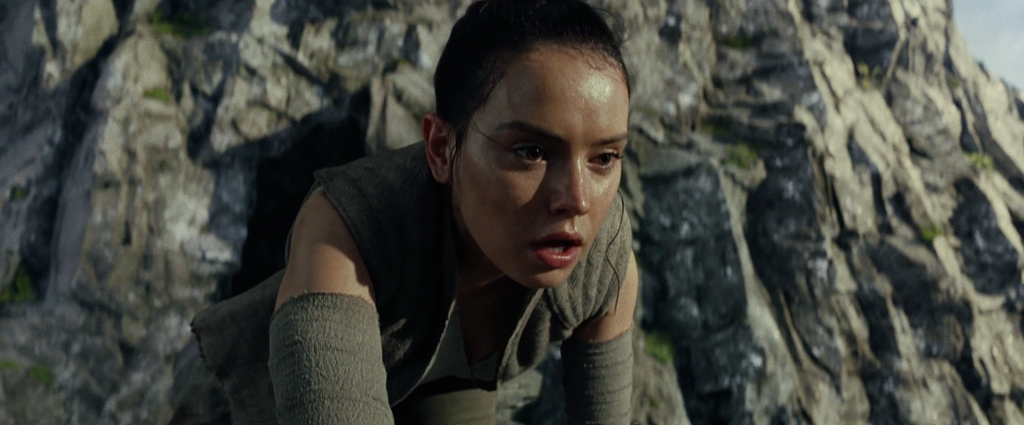
3. The Force—the real Force—is strong with both
Char cares about all that because he’s a Newtype—aka the Gundam universe version of a Jedi or Force-wielding individual. In the universe, Newtypes were discovered in space and are considered the next phase of human evolution. They are empathic, often highly skilled combatants, and, most importantly, possess an advanced mental acuity that allows them to psychically control mobile suit machinery better than their “Oldtype” human counterparts—and even communicate feelings or complex thoughts telepathically.
The best part about all this sci-fi pseudoscience mumbo-jumbo silliness is, of course, that it’s never explained super clearly and if it is, you can totally gloss over it and not miss a beat. What Luke Skywalker says about the Force in The Last Jedi should sound familiar because we know it shouldn’t need to be explained. We know the Jedi and the Sith in Star Wars, along withentities like the Earth Federation and the Titans in Zeta Gundam, have interests that lead them to exploit the Force and Newtypes and use them to wage war. One of the key repeated lessons of both series is that power corrupts. No need to bring up midichlorians and no need to think about it too much in either case.
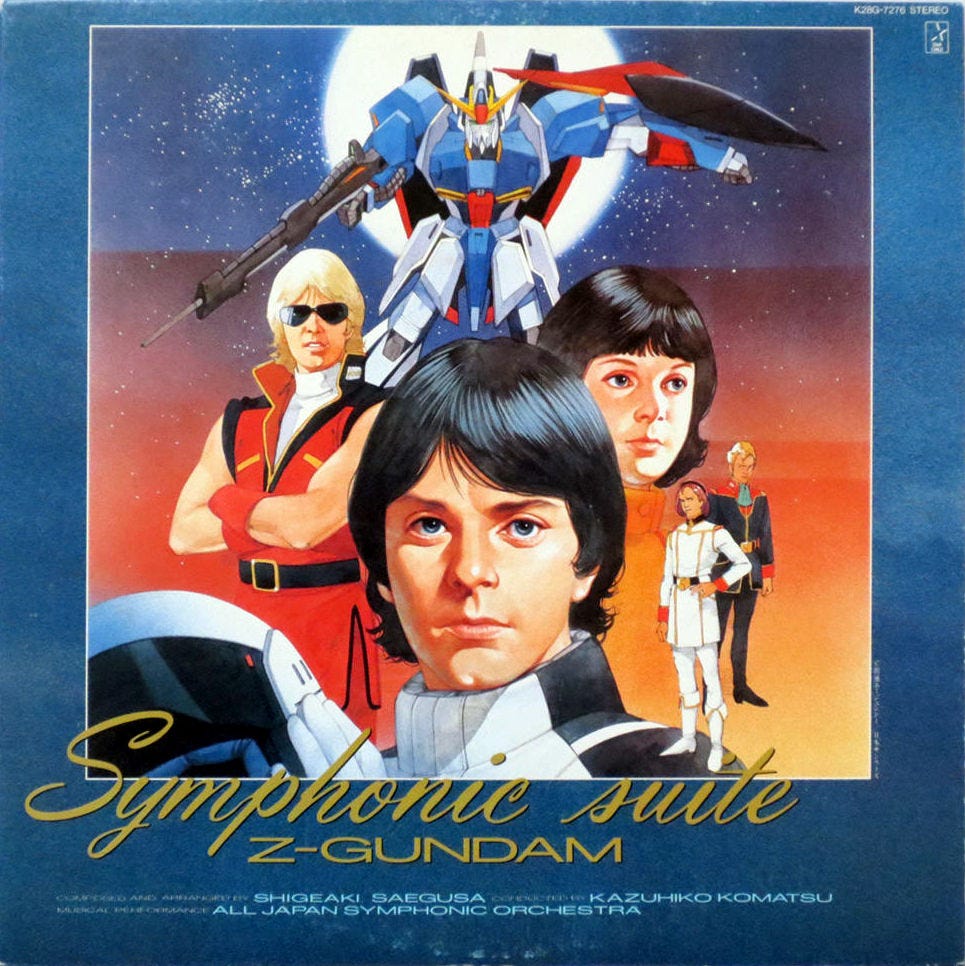
4. They both have killer music with the OG ‘Star Wars’ DNA in it
Now, I am not entirely certain of this, but as far as I’m aware, Zeta Gundam is the only Gundam series that warranted a soundtrack release of its own symphonic suite at some point in the ’80s, with album art—see above—that was clearly inspired by the original Star Wars posters of yore. The symphonic suite itself, composed and arranged by Shigeaki Saegusa and performed by the All Japan Symphonic Orchestra, is a sweeping set of military marches that culminates in a track titled “Love Concerto.” If you listen to how goofy the sheer ’70s-ness of the original Mobile Suit Gundam theme sounds in contrast to this, there’s simply no comparison. The grandiosity of Zeta Gundam starts with this soundtrack and continues through the dark themes of the film, just as John Williams fleshed out the adventure of the original Star Wars when it came time to score Empire and as he did again when The Last Jedi came around.
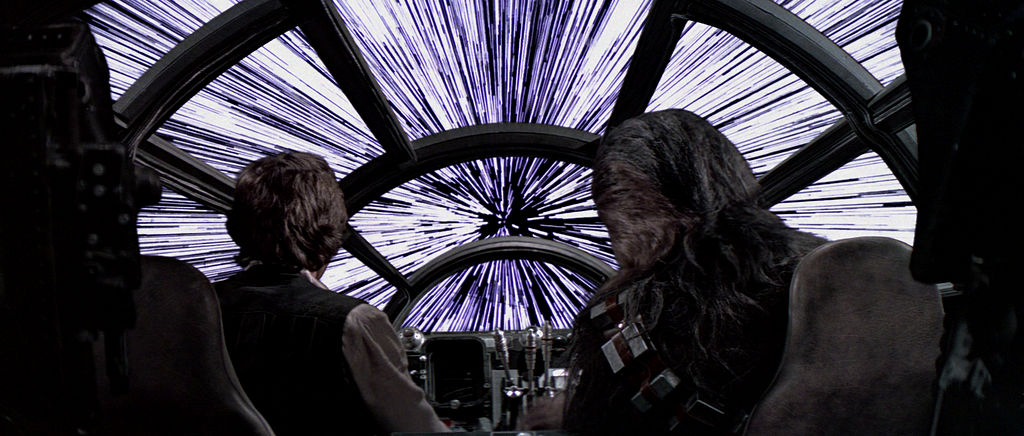
5. Like all great space operas, the badasses might not make it
Space operas and heroes’ journeys of all sorts necessarily require the sacrifice of the master so that the hero can move forward. The Last Jedi is no different, nobly killing—or nearly killing—so many of its badasses: General Leia Organa (sort of), Luke Skyalker (definitely), and Vice Admiral Holdo (in The Most Anime Move of All Time). And whether it’s Roy Fokker or Treize Khushrenada or Spike fucking Spiegel, the same fate comes to all anime badasses too, eventually. I won’t spoil the end of Zeta Gundam wholesale here. Just know that shit goes does down. It’s sad, sure, but the ride to the finale is thrilling and makes you care, just like Laura Dern made you care right before Holdo made the final hyperdrive jump.
Mobile Suit Zeta Gundam is available on Blu-Ray and you can probably find some episodes on YouTube.
Thanks for reading The Dot and Line, where we talk about animation of all kinds. Don’t forget to for this article and follow us on Twitter and Facebook.


